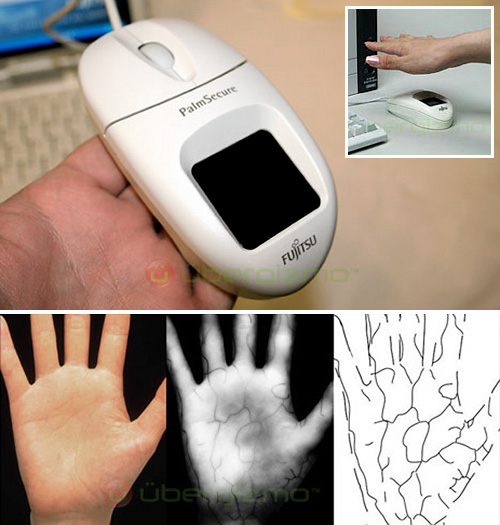
By Andrew Liszewski
I’m trying to leave most of our coverage of CES in the extremely capable hands of Evan, but there are a few items here and there that have caught my eye. Like this PalmSecure mouse from Fujitsu that uses vein pattern verification for security purposes, instead of fingerprint recognition.
The technology already has quite a few advantages over using fingerprints, not the least of which is the fact you simply hold your hand over the sensor instead of actually touching it. So if this type of security system was ever used on a public device like an ATM, the sensor has less of a chance of getting dirty over time. And in order to acquire an accurate image of the vein pattern, there has to be blood circulating through the body. I’m sure everyone has thought about circumventing a fingerprint security system by simply cutting off the victim’s finger, but that approach won’t work here. (Come on! I can’t be the only one who’s thought of that!)
While the technology is primarily being marketed as an “enterprise solution” Fujitsu hopes to have a consumer-friendly product ready in the near future.





Noone is actually sure whether any biometric is entirely unique, but the way that veins grow means that there should be little replication (lots of veins, lots of ways they can grow). I don’t think it is known if they are unchangeble over time, either. However, for a mouse controlling access to a computer system (i.e. relatively few users, not like a national ID system), vein patterns should be adequate.
I am a second year Master's student in the Department of electronic engineering, I need all that is new in this area because it represents the master's thesis ( face recognition )
I am a second year Master's student in the Department of electronic engineering, I need all that is new in this area because it represents the master's thesis ( face recognition )